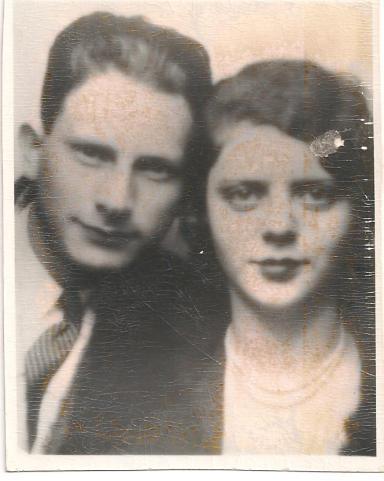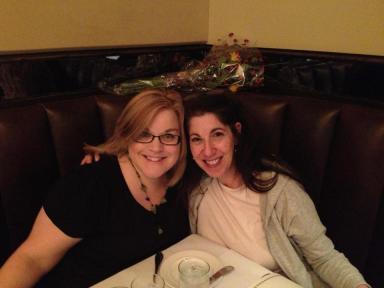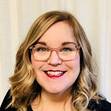Amy Sue Nathan's Blog: Women's Fiction Writers, page 35
October 30, 2013
Deanna Adams Weaves Fictional Characters Through The 60s And 70s
 I’m not sure where the historical/contemporary fiction line is drawn, but if you’re not writing in the here and now, there’s research to do! That sounds daunting to me as well as exciting. Even while writing my new novel, I’m researching the 80s and 90s because that’s when my main character grew up (which was after I’d already grown up!).
I’m not sure where the historical/contemporary fiction line is drawn, but if you’re not writing in the here and now, there’s research to do! That sounds daunting to me as well as exciting. Even while writing my new novel, I’m researching the 80s and 90s because that’s when my main character grew up (which was after I’d already grown up!).
In PEGGY SUE GOT PREGNANT, author Deanna Adams merges baby boomers, the 60s and 70s, and rock ‘n roll. Doesn’t that sound fun?
Below, Deanna tells us about her novel and shares that women’s fiction is “showing women facing their problems head on, and finding ways to overcome those problems.”
Please welcome Deanna Adams to Women’s Fiction Writers!
Amy xo
Deanna Adams Weaves Fictional Characters Through The 60s And 70s
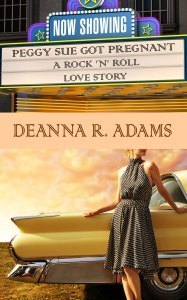 Amy: In this era of so many options for authors who want to be published, how did you connect with your publisher? What was your journey to publication of PEGGY SUE GOT PREGNANT?
Amy: In this era of so many options for authors who want to be published, how did you connect with your publisher? What was your journey to publication of PEGGY SUE GOT PREGNANT?
Deanna: First of all, thank you for having me, Amy, I’m honored to be a part of my favorite blog!
Although I’ve been a professional writer for more than 20 years, and have had three books published, it wasn’t easy becoming a “trans-genre,” as I now call myself.  . I’ve always been a nonfiction writer with dreams of some day writing that novel. That day came when I was watching Forrest Gump, for the third time. I love how the story weaves fictional characters through the events of history. Being a rock ’n’ roll/pop culture writer, I thought, “What if I did something similar with my first novel, using a female protagonist who lives through the events of the ’60s and ’70s?”
. I’ve always been a nonfiction writer with dreams of some day writing that novel. That day came when I was watching Forrest Gump, for the third time. I love how the story weaves fictional characters through the events of history. Being a rock ’n’ roll/pop culture writer, I thought, “What if I did something similar with my first novel, using a female protagonist who lives through the events of the ’60s and ’70s?”
Problem was, there aren’t a lot of successful “rock ’n’ roll novels” out there. Did that deter me? Frankly, yes. After all, we want our books to sell well, and I doubted a debut rock novel could compete with today’s top genres, such as YA, historical romance, etc. Although my book does have elements of those genres, beginning with a teenager’s POV, it’s definitely women’s fiction, with a lot of pop culture events tied in. So what to do? I’ve never been an inside-the-box kind of girl, and that’s a problem in today’s niche publishing. Still, I have to write what I’m passionate about. And I love writing the stuff of baby boomers. We lived through an amazing time in history, with so many changes—especially for women. And that’s what I wanted to write about.
Of course, I was right about the genre. I queried probably 50 or more agents, and I received several requests for a partial, or full submission, and ended up with glowing rejections. Most said they loved the writing, the characters, the story . . . but they didn’t think they could sell it to one of the big publishers. So I started checking out smaller publishers, hoping to find someone who didn’t think cross-genre fiction was a deal breaker. In the meantime, I revised the manuscript a couple more times, thanks to suggestions from my cherished writers’ group. Somewhere along the way, I came across Soul Mate Publishing, and read this: “We encourage novels that are original and blur the genre lines.”
Bingo! Right up my alley!
Amy: What’s your favorite part of the writing process?
Deanna: Well, actually, there are two. Writing a book is like a marriage. First, there’s the honeymoon, when everything is new, exciting, and you have great expectations. But then, after awhile, you find yourself in the “trenches.” When you’re burdened with unexpected problems, and you question if this was a good idea, as you try to figure a way through it. If you can get past that, you’re on your way to celebrate an anniversary—or in this case, a published book.
So I love the beginning process, that exciting time when you get the story idea and start writing it, and get surprised by what those characters have in store for you. I love that part of creation, organizing the story, then developing it as the story progresses. But I also love getting to the climax, where the story heats up and events head toward the end. Both stages are thrilling.
Amy: Is there a character in your novel who has most of your affection or got most of your attention? Care to share a few things about this character and why we’ll love him or her as well?
Deanna: Is it crazy to say several? Peggy Sue, of course, is the one I feel most affection for, naturally. She starts off young and naïve, wanting to please everyone, and although there are times she tries to fight for what she wants, she ends up succumbing to what others want. That is, until she finally follows her heart, after events in her life force her to stand up for herself and her child. While I admire her sense of family loyalty, I enjoyed it when she realizes that she must be true to herself first. I like her best friend, Libby, for her feistiness, and strength in the face of adversity. And Angela, her black girlfriend from Detroit, is a wonderful character who allowed me to bring in a little history of those great early Motown years. Then there’s Charlee, Peggy Sue’s rocker daughter, who I’m getting to know more now that I’m writing the book’s sequel. The men are interesting, too, course, but it’s the lives of these women who are at the center of the novel.
Amy: How did you come up with the idea for PEGGY SUE GOT PREGNANT?
Deanna: When I decided that this was going to be a story about a woman living through the baby boomer era—and all that went with that era—I knew I had to come up with a title that would immediately take you back there. I’m a big fan of Buddy Holly, so of course, Peggy Sue came right to mind. And at the time, I’d been reading The Girls Who Went Away by Ann Fessler. The stories of how these young “unwed mothers” were treated in the ’50s and ’60s were both riveting, and horrifying. (Luckily, I never experienced that personally, which is a question readers often ask me.) I felt a strong urge to address and acknowledge that historic time that even today still affects these women who gave up a child, as well as those who were adopted, and their records are sealed. I wanted to remind women how things have changed through the years, thanks in great part to the women’s movement. We’ve come a long way baby, indeed! So I wanted to explore the life of a girl who found herself in that situation, and how she dealt with the consequences that emerged from that. Once that premise was established, the story pretty much wrote itself. Sounds hokey, I know, but it’s true.
Amy: What is your definition of women’s fiction?
Deanna: I believe women’s fiction, as opposed to romance, is about women’s lives: their relationships, with men, as well as other women, and their ultimate goals. It’s showing women at their most vulnerable. It’s showing women facing their problems head on, and finding ways to overcome those problems. These women not only grow, but thrive.
So women’s fiction is using imaginary characters to show how real women can become heroes in their own lives. Readers want to identify with the characters and ride their journey with them, and even if the story doesn’t have the proverbial happy ending, it should leave readers satisfied in knowing that women are survivors, and there is always hope for the future.
Amy: As a women’s fiction author, what’s your best advice for others wanting to publish in this genre?
Deanna: I guess that would be, decide what you want to say to women through your story. There should be a good reason why you want to write the book, and why you’re the only person who can tell that particular story. Sometimes you use your own life experiences to tell an important story. Other times, as in my case, you take your knowledge of a specific era, and interest in a certain subject, and use the art of storytelling to convey your message.
Simply put, follow Peggy Sue’s path and be true to your heart. Write the book that you feel needs to be written.
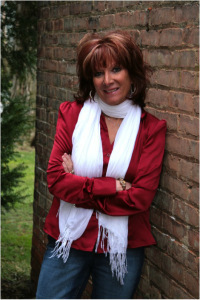 Deanna R. Adams is a writer, speaker, instructor, award-winning essayist and author of three nonfiction books. Her debut novel, Peggy Sue Got Pregnant: A Rock ‘n’ Roll Love Story, will be released in June 2013. Her first book, Rock ’n’ Roll and the Cleveland Connection (Kent State University Press, 2002), was named a finalist for the Ohioana Award for nonfiction, and the ARSC Award (Association for Recorded Sound Collections) for excellence in research. Other books are Confessions of a Not-So-Good Catholic Girl (Infinity Publishing, 2008) and Cleveland’s Rock and Roll Roots (Arcadia Publishing, 2010). She received an Ohio Excellence in Journalism Award in 2009.
Deanna R. Adams is a writer, speaker, instructor, award-winning essayist and author of three nonfiction books. Her debut novel, Peggy Sue Got Pregnant: A Rock ‘n’ Roll Love Story, will be released in June 2013. Her first book, Rock ’n’ Roll and the Cleveland Connection (Kent State University Press, 2002), was named a finalist for the Ohioana Award for nonfiction, and the ARSC Award (Association for Recorded Sound Collections) for excellence in research. Other books are Confessions of a Not-So-Good Catholic Girl (Infinity Publishing, 2008) and Cleveland’s Rock and Roll Roots (Arcadia Publishing, 2010). She received an Ohio Excellence in Journalism Award in 2009.
Deanna is also an instructor and event coordinator at Lakeland Community College, and instructor for the Cuyahoga County Libraries Lit program, where she speaks and teaches on a number of writing topics. She is coordinator of the Western Reserve Writers’ Conference and founder of the Women Writers’ Winter Retreat, and Write-on-the-Lake Retreat.
Find out more about Deanna on her website: www.deannaadams.com, on Goodreads, or by following her on Twitter. Her email address is DeeNCR@aol.com.


October 23, 2013
Author Joan Steinau Lester Tackles A Mother/Daughter Relationship And Civil Rights Issues In MAMA’S CHILD
 You know what they say: timing is everything. And just as I was about to interview author Joan Steinau Lester about her novel, the whole Cheerios commercial debacle popped into public view. If you missed it, a mixed-race family was featured, and threw some people (to be generous) into a tizzy (to put it nicely).
You know what they say: timing is everything. And just as I was about to interview author Joan Steinau Lester about her novel, the whole Cheerios commercial debacle popped into public view. If you missed it, a mixed-race family was featured, and threw some people (to be generous) into a tizzy (to put it nicely).
Joan’s novel, MAMA’S CHILD, is about a white mother and biracial child and spans forty years.
Please welcome Joan Steinau Lester to Women’s Fiction Writers and share your thoughts in the comments!
Amy xo
Author Joan Steinau Lester Tackles A Mother/Daughter Relationship And Civil Rights Issues In MAMA’S CHILD
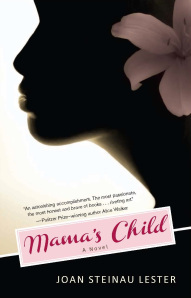 Amy: Where were you when the idea sparked for Mama’s Child?
Amy: Where were you when the idea sparked for Mama’s Child?
Joan: There wasn’t a single moment, but rather a growing number of issues I wanted to take on that gathered strength, culminating in Mama’s Child. One component was my annoyance with the plethora of memoirs by 30- and 40-somethings which trashed their bohemian/activist mothers for unconventional parenting. I wanted to write a novel presenting one such mother’s point of view, giving readers an opportunity to understand the genuine ideals which might have driven her, such as the pedagogy then emerging about the benefits of “free choice” for unfettered Free Children. But as I embarked on the project, written in first person from a fictional white mother’s POV, another voice—her biracial daughter’s—piped up: “Just like you white people to hog all the space. I want my say!” And that was Ruby, demanding her perspective be heard. Quite rightly, I thought; thus the double narrative was born, so we hear from each of the two women, Elizabeth and Ruby Jordan, in this complex mother-daughter tale.
A second motivation was my desire to flesh out the image of 60’s and 70’s civil rights activists, often portrayed now as hedonistic, spoiled young adults. Actually, they were leaning their shoulders against the wheel of history, determined to topple the long history of brutal Jim Crow laws and customs which followed slavery. Most of those in the civil rights movement didn’t even use the recreational drugs then prevalent, because they didn’t want to give the cops any excuse to bust them.
As a third motivation for Mama’s Child, the mother-daughter theme in literature has long fascinated me. What a fraught, intense, wonderful, and complex relationship that can be, and I’ve found sustenance over the years in both fiction and non-fiction that delves into the topic. As both daughter and mother myself, I wanted to take a crack at this rich material.
And finally, I wanted to write full-bodied portraits of both a mother and daughter who are good-hearted and well-intentioned, but also flawed and occasionally blinkered, adding to the spectrum of women in literature.
Amy: I know what it’s like to take snippets of my life and turn it into a novel. Did you struggle with the idea that readers or people who know you would think the Mama’s Child was a memoir? Why did you decided to make it a novel?
Joan: One of the benefits of the double narrative I ultimately used was that no-one could imagine the novel is a memoir, since a memoir is inevitably restricted to a single point of view: the author’s. Of course since there are certain parallels with my own life (my early marriage as a white woman to an African American man, our civil rights involvement, and our mixed-heritage children) readers do sometimes jump to the conclusion that the book is based on my life. Actually, I worked hard to initially create characters quite different in personality, desires, physiques, and habits from my own family, since the plot and setting were not based on “reality.” Soon, I have to say, the fictional characters became their own people in my mind, who began to act in ways that surprised even me. As I worked over many drafts, any early concern that these people might represent those in my own life vanished.
I did decide to write fiction rather than memoir because I am aware of privacy concerns of others in my family/life, and wanted to respect those; and also, I actually thought that fiction, in this case, might be more interesting than real-life!
Philip Roth said recently that novelists use the “facts” of our own lives as springboards to jump into the deep waters of imagination. I have found that to be marvelously true.
Having said all that, I’ve flinched once or twice when readers conflated the white mother character, Elizabeth, with me. I like to think I am a much kinder and more self-aware person than she! But I understand the tendency to project the author into the character of a first-person narrator who bears any demographic resemblance, and am using this experience to check my own responses as a reader.
Amy: In light of the “Cheerio’s commercial” mayhem where a mixed race family is featured, do you think that attitudes toward mixed-race families have changed? Do prejudices and stereotypes affect the way you talk about your book or promote it? What have your experiences been?
Joan: Despite the brouhaha kicked up by that charming media portrayal of a mixed family, the environment for mixed race families has changed beyond what my fictional Jordan family could have imagined fifty years ago. First, such marriages are now legal all over the U.S., which they weren’t when Solomon and Elizabeth Jordan married in 1963. It was only the Loving decision by the U.S. Supreme Court in 1967 which removed all racial barriers to marriage. Second, not only did were there no images of such families on TV, no African Americans at all appeared on television commercials.
Now, one in every ten U.S. marriages is considered a “mixed” marriage, so although such families may merit a quick double-take, people actually risked their lives walking down the street hand in hand fifty years ago.
Regarding how any remaining stereotypes affect my promotion: I have had many fascinating conversations with radio hosts and blog reviewers/interviewers, but can’t think of ways that lingering prejudices have affected the discussions. Mostly people are eager to either talk about mother-daughter relationships in general, or about how others still view mixed families with suspicion. I had wondered how I, as a white author writing about race, might be received by African American readers, but at least half of my enthusiastic reviews and interview requests have come from African American women.
Amy: As a writer, how do you approach a story? Do you outline? Write out of sequence? Just let it come as it may?
Joan: I write intuitively, meaning, yes, I let it flow, without an outline, although as I get a lot of material—many chapters—I do a brief outline of what I already have. In a novel like Mama’s Child, which spans 40 years, I note what years each chapter covers, and one or two key events, just so I can keep track of it all. In my previous book Black, White, Other, a teen novel, there were lots of characters so I kept a chart for all the protagonist’s friends, with a note about each one’s quirks/distinguishing speech tics.
I do write in sequence, although often the first few chapters, over which I labor, will eventually be scrapped entirely, with only a few paragraphs making it into the final book. This was what happened with Mama’s Child. I had originally started the novel with Elizabeth and Solomon’s 1963 meeting in Jackson, Miss, where they were both voter registration volunteers, but after years of polishing those opening chapters, I decided to jump right into the heart of the story—the conflict between Elizabeth and her daughter Ruby. I ended up opening with Ruby at age 11, in a dynamic scene involving her mother, and used scraps of those fabulous opening chapters as flashbacks. A writing teacher once said to me years ago, “Don’t start your story at the beginning. Start it in the middle.” This excellent advice has stayed with me, and I employed it here.
Amy: What is your definition of women’s fiction?
Joan: Ah, so much of the fiction I read, and certainly that I wrote, would be defined as “women’s fiction” that I’m tempted to fall back on the old paraphrase of the Supreme Court Justice Potter Stewart’s definition of his threshold test for pornography: “I know it when I see it.” It involves work primarily concerned with relationships, so in that sense since it is often character- rather than plot-driven, that would describe much of literary fiction. I am aware how high a proportion of the fiction I love is by women, with central female characters. Will be interested to hear what others have to say about this!
Amy: Please share your best advice for aspiring authors of women’s fiction!
Joan: Write, write, write. You will get better, the more you create.
And read, of course! Read amazing literature like Zora Neale Hurston’s Their Eyes Were Watching God or Chimamanda Ngozi Adichie’s Half of a Yellow Sun, to observe great artists at work, creating gorgeous sentences within brilliantly constructed novels. You will be inspired to reach for never-before-created images, similes, and metaphors—and above all, to write in your own unique voice. Can’t wait to read your work!
Thanks so much for the opportunity to share my thinking about writing.
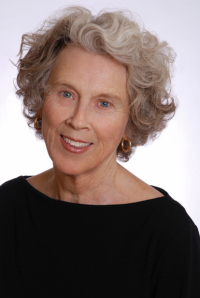 Dr. Joan Steinau Lester is an award-winning commentator and author of four critically acclaimed books: Eleanor Holmes Norton: Fire In My Soul; The Future of White Men and Other Diversity Dilemmas; Taking Charge: Every Woman’s Action Guide; and her first novel, Black, White, Other: The Search For Nina Armstrong.She has won the NLGJA Seigenthaler Award in journalism and the Arts & Letters Creative Nonfiction Finalist Award.Taking Charge was nominated as a Best Women’s Book by the San Francisco Women’s Heritage Museum and Mama’s Child was a Bellwether Prize finalist.
Dr. Joan Steinau Lester is an award-winning commentator and author of four critically acclaimed books: Eleanor Holmes Norton: Fire In My Soul; The Future of White Men and Other Diversity Dilemmas; Taking Charge: Every Woman’s Action Guide; and her first novel, Black, White, Other: The Search For Nina Armstrong.She has won the NLGJA Seigenthaler Award in journalism and the Arts & Letters Creative Nonfiction Finalist Award.Taking Charge was nominated as a Best Women’s Book by the San Francisco Women’s Heritage Museum and Mama’s Child was a Bellwether Prize finalist.
After receiving her doctorate in multicultural education, Dr. Lester served as the Executive Director of the Equity Institute, which pioneered the diversity wave of the ’80s and ’90s, for sixteen years.
As a member of a biracial family, Lester’s lifelong passion has been writing about issues of racial identity. Her former husband and father of her children was black; she has been with a female partner/spouse for over thirty years. Lester’s writing has appeared in many newspapers and magazines, including Essence, Los Angeles Times, Chicago Tribune, San Francisco Chronicle, Huffington Post, and Cosmopolitan. She lives in Northern California.
Find out more about Joan on her website, on Goodreads, or by following her on Twitter.
If you haven’t seen the Cheerios commercial that created a commotion among some adults (with the cutest little girl I’ve seen in a long time) here it is:


October 17, 2013
Guest Post: Author Rita Plush On Writing The Short Stories Of Our Lives And Never Giving Up
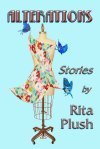 I love writing short stories but set that aside as I pursued writing novels. I’ve had six short stories published and amongst them are some of my favorite characters. I’ve considered revisiting these people who inhabited me for spurts of time and had their tale told in 3,000 words or less (I write very short short stories.) And after reading Rita Plush’s post on short story writing and short story collections, I’m considering it again.
I love writing short stories but set that aside as I pursued writing novels. I’ve had six short stories published and amongst them are some of my favorite characters. I’ve considered revisiting these people who inhabited me for spurts of time and had their tale told in 3,000 words or less (I write very short short stories.) And after reading Rita Plush’s post on short story writing and short story collections, I’m considering it again.
I’m hearing about more and more short story collections these days. Do you read short stories? Have you written or published short stories? Tell us in the comments.
Please welcome Rita Plush back to Women’s Fiction Writers.
Amy xo
Alterations: The Short and Long of It
by Rita Plush
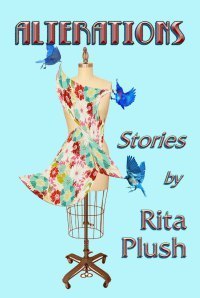 “If stories weren’t told or books weren’t written, we would live like the beasts, only for the day… the whole world, all human life, is one long story,” Isaac Bashevis Singer said.
“If stories weren’t told or books weren’t written, we would live like the beasts, only for the day… the whole world, all human life, is one long story,” Isaac Bashevis Singer said.
Stories link us, they connect us to our own lives and to the lives of others. Story-telling is as natural as speaking and goes as far back as humankind. Think of the cave paintings and how people recorded their lives before they had words to express themselves. We’re wired to document our lives.
And so we tell our stories. We describe and elaborate, at times we add a little color and interest to make the story better. As writers, we stretch the truth for the sake of a more interesting story. We tell stories about everyday things, what the cable guy said when he hooked us up to HBO. Or we describe the outrageous outfit on the checkout girl at Waldbaums, the one with the eyebrow piercings and nose ring when she rang up our chicken parts and Eddy’s ice cream.
Then there are our family stories, told and retold. Stories that go back generations and become part of our oral history, telling about how Grandma Malka hid cigarettes in the hem of her long skirt to bribe the border guard in order to gain safe passage to America. From our children to our grandchildren we pass down these stories so that they might know how it was with their ancestors, linking the generations one to the other.
Sometimes the spoken word becomes the written word, more structured, more ordered, but always there are our stories.
Part of my personal story is that I’m a late bloomer. I didn’t begin to write till I was in my late forties as a candidate for a Masters Degree in Creative Writing at Queens College in NYC. Now in my mid-seventies—it’s never too late girlfriends!—I have many published essays, articles, one novel (Lily Steps Out, Penumbra Publishing 2012)—another in the works—and a collection of short stories (Alterations, Penumbra 2012) under my faux leopard belt, and though writing came naturally to me, getting my stories into print was another story entirely.
Ninety-three tries—and that’s no typo—it took before my first short story was published in 1993. Other stories I sent out met with the same kind of rejection. What was I doing wrong? My stories had heart—I thought. The characters were believable—my writers’ group said they were. Yet all that came in the mail were form letter rejections and the occasional “try us again.” And try I did, till “Love, Mona,” that first story was picked up by a journal, and over time others as well.
To anyone who is struggling with a novel and thinks a short story would be a piece of cake, my advice is Don’t Try This At Home. It’s precisely because of its brevity that the short story requires a certain kind of discipline. And though, as with a novel, there are no hard and fast rules to follow, I’d like to share some of things I’ve learned over the past twenty years that have helped me in honing my skills on the short form.
For one thing, because we have much less space in which to tell our story, a smaller landscape in which we and our characters can move around, there is sess room for little asides and vignettes—I do love those little asides and vignettes—fewer characters—one of my favorite things is creating characters—no wonder my stories were rejected time and time again.
The backstory, if there is one, needs to be incorporated into the narrative or dialogue. Dialogue being the most practical and word-efficient way to move the story forward. Yet an entire, understandable world must be created in those 10-15 double-spaced pages.
Every word, every gesture, everything that’s said and done by your characters, the setting, the climate and atmosphere of the story, must bring the reader to the climax of the story.
That doesn’t mean that the story has to be neatly tied up. The ending can be open-ended, it can be a surprise, but it should resonate with what has already been laid out. We want the ending to make sense to the reader, even if that ending is disturbing. Make them cry, make them laugh, make them beg for more.
“Alterations” is a collection of stories written over a period of twenty years, some of them harking back more than fifty years, stories that had lived in me, the way stories do, as a bit of memory – a certain smell, the turn of a head, or the particular sound of a voice.
Stories set in Brooklyn, are told through the eyes of a child growing up with the rumble of the El along 86th Street, walking with her mother in her big-shouldered mouton coat, as she did her errands and talked with the shopkeepers. The walkup apartment house where the metal taps on her shoes made a satisfying clicking sound as she ran up and down the marble steps. The seamstress in the building, her friend’s father who seldom spoke, the people her parents knew, the relatives—her ear pressed to the wall, hearing talk that was not for her to hear—the people they spoke of in Yiddish so the child would not understand.
Decades later, they called to me, the memories of them morphing, changing, altering, the people becoming characters that were and were not them. And I kept writing. I dressed my characters, gave them habits and a particular way to speak and put them down on the pages, wanting things they could not have, remembering things they wanted to forget. They mended and they sewed, they owned stores and boutiques, they jerry-made contraptions and carved dollhouse furniture. They dug in the dirt and planted tomatoes, and put together a jigsaw puzzle in a far off mountain cabin—they loved to dance.
“Alterations” didn’t start out as a collection, in that one day I sat down at my laptop and said, “I’m going to write a collection of stories.” It started with that one story I began in 1993 about a quilted dime-store night table and a sleeping Mexican painted on a cupboard door, the story I had a compelling need to tell. Other stories followed. But I no more thought collection, than I thought my name was Joyce Carol Oates.
A collection needs a connective link, stories that have something in common, a recurring theme or idea that ties them together. But I wrote my stories without a specific theme or idea in mind. The characters and the writing itself brought the stories to fruition. Little girls and adolescents, a teenager, a father, a son, grown women, a whole slew of characters, who to my mind had little to do with each other. Yet when I reread them all again last summer, I saw that there was a link, and that link was the aching need for family, a recurring theme in my novels as well.
Families of different types and mindsets, families that were broken and those that were healing, families my characters clung to, and those from which they ran. And it was to that enduring notion of family life, with all its messy complications, its intrigues and dramas, its loving and sometimes mysterious bonds, that I dedicated “Alterations,” in memory of my parents, Molly and Max Weingarten.
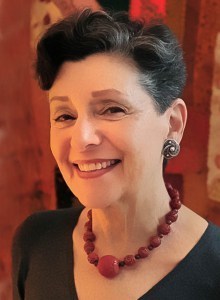 Rita Plush is an author, teacher and interior designer. Her writing practice includes fiction and non-fiction. Her stories and essays have appeared in many literary journals including The Alaska Quarterly Review, The Iconoclast, The MacGuffin and Passager. She is the author of the novel, Lily Steps Out (Penumbra Publishing, May 2012), and she is at work on a second novel that follows some of the characters in “Lily.” Her short story collection “Alterations,” was published by Penumbra in May 2013. She has lectured on the decorative arts at libraries throughout Long Island, at Hofstra University and CW Post-Hutton House and is Coordinator of the Interior Design & Decorating Certificate at Queensborough Community College and teaches several courses in the program.
Rita Plush is an author, teacher and interior designer. Her writing practice includes fiction and non-fiction. Her stories and essays have appeared in many literary journals including The Alaska Quarterly Review, The Iconoclast, The MacGuffin and Passager. She is the author of the novel, Lily Steps Out (Penumbra Publishing, May 2012), and she is at work on a second novel that follows some of the characters in “Lily.” Her short story collection “Alterations,” was published by Penumbra in May 2013. She has lectured on the decorative arts at libraries throughout Long Island, at Hofstra University and CW Post-Hutton House and is Coordinator of the Interior Design & Decorating Certificate at Queensborough Community College and teaches several courses in the program.
Rita, and the publication of Lily Steps Out was the feature article—“published and proud”—in Newsday’s Act II section in July, 2012, and “Rita Steps Out,” was featured in the Times Ledger August, 2012. She has interviewed on Metamorphosis, The Writers’ Dream and The Play’s the Thing on Long Island TV, Chanel 20. She has guest blogged about writing on Best Chick Lit, Women Fiction Writers and Dames of Dialogue to name a few.
Visit her at www.ritaplush.com for more news about Rita.


October 9, 2013
Four Authors Walk Into A Bar
Okay, it was a restaurant, but still.
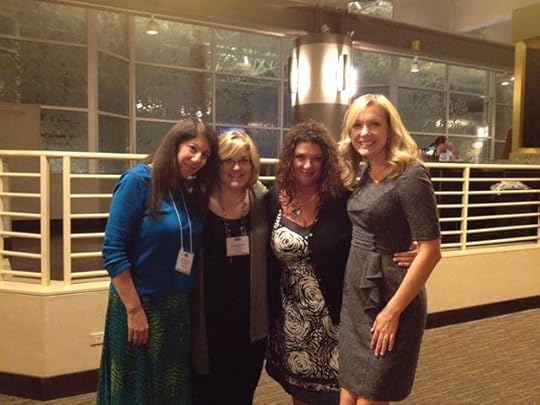
Renee Rosen, Me, Amy Hatvany & Nicole Baart
Last weekend I attended the Heartland Fall Forum in Chicago, an annual trade show where Midwestern booksellers get to check out the latest books from big, small, specialty and regional publishers and meet with authors. That also means that authors get to spend time meeting those booksellers and talking about books. And as you can see, authors also get to hang out with each other.
The lessons I learned at Heartland are lessons for any writer who wants to be out and about talking about his or her book, either now or some day.
Four Lessons I Learned At Heartland (Before I Got To The Bar)
1) Wear comfortable shoes. My shoes were very comfortable when I walked around the house, got in and out of the car and went out for dinner, but hoofing it all over a conference hotel was a different story. I also learned that Band-Aids in hotel gift shops cost about 50 cents a piece. And are worth every penny.
2) Smile at everyone. People know who you are or they know someone who knows you or they have seen your photo somewhere. And if they don’t know you now, they’ll meet you later. So, if you don’t feel like smiling for a while, or you’re cranky, let’s say, because you have multiple blisters on both feet, or can’t find the bathroom, go to your room and regroup. Mine was quite lovely.
3) Know what your book is about. Don’t give me that look. Really. Know exactly what you’re going to say, and then what else you might say if prompted for more. Many of us write our loglines, elevator pitches, back cover copy, etc., but at a trade show with booksellers you really just need to BOIL IT DOWN. These folks have LOTS of authors to meet and books to collect. I signed almost 100 books and individually spoke to all those booksellers. Yes, within the context of many conversations, I said the same thing almost every time. If it ain’t broke, don’t fix it. I will add, the cover of The Glass Wives is universally loved, so I have no problem having the book judged by that in addition to its premise. The booksellers were also thrilled to learn there are reader questions and a personal essay in the back of the book. Added value all around!
4) Connect in a personal way. Being a “local,” I was able to connect on that solid Midwestern level. I live in Illinois (I’ve actually lived here twice, once from ’94-’96, and then again since ’99), I’ve lived in Ohio, and my kids go to college in Indiana and Wisconsin. There was lots of geography banter at my table. So if someone wants to lend me kids in Iowa, Minnesota and Michigan, I’d be 100% covered for next time. I even met a bookseller—get this—who lives around the corner from me. (I really must get out more.) I also am now besties with my volunteer/helper/bookseller from the event. We were having a blast (it was so fun for her to open my books for me, she told me so) even before we realized we both know author Mindy McGinnis. Are you near Delaware, Ohio? Check out Fundamentals Children’s Bookstore.
After the revelry of the signing event it was amazing to hang out with Renee, Amy and Nicole in a dark, quiet corner of the restaurant (not our choice, but it worked). I still tend to go all fan-girl with authors and I’m afraid I might have scared Amy with an extra-long hug, but oh well. Nicole is amazing with a house full of young children and her fourth book due out next year. Four kids, four books. I’m sensing a trend here. Renee and I have been friends for years now, both of us in Chicago. We meet for writerly girlfriend lunches where our usual meeting spot goes from lunch-hour packed to mid-afternoon empty. She has given me excellent publishing advice (she knows a lot!) and when she texts or calls me, she knows she can start mid-sentence and I’ll catch on. Eventually.
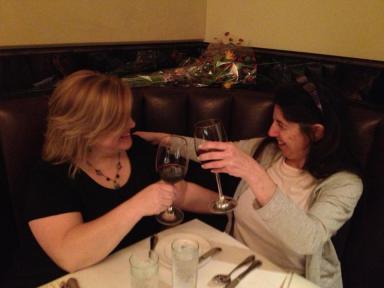
Renee & I celebrating the launch of THE GLASS WIVES. Soon we’ll be toasting DOLLFACE, out November 7th!
It’s an immediate kinship, this author thing. It’s the secret bonus of the publishing world—the royalties that have nothing to do with book sales.
I hope you all get to experience it.
Amy xo
P.S. Another highlight? Name tag! (Does this ever get old? I hope not!)
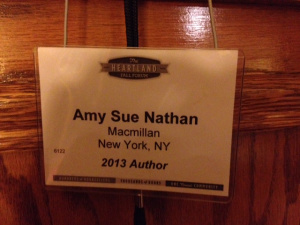
Who needs jewelry? (Just kidding!)


October 2, 2013
Are Your Fictional Characters Based On Real People? Author Anne Clinard Barnhill Says Yes. Sometimes. Sort Of. Maybe.
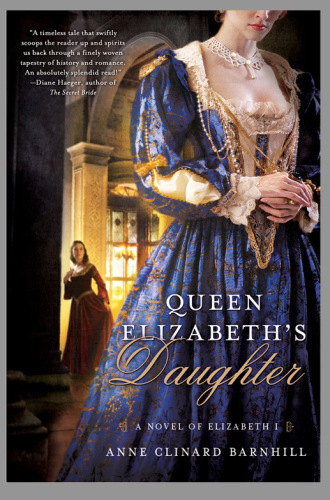 I’m honored to say that Anne Clinard Barnhill is my friend. She’s part of my treasured Book Pregnant author group, and someone who is easy to talk to and admire even from far away. You can read here how Anne just finished a year of cancer treatment. and here you can read the story of Anne’s life in 250 words! (Everything Anne writes is worth reading!)
I’m honored to say that Anne Clinard Barnhill is my friend. She’s part of my treasured Book Pregnant author group, and someone who is easy to talk to and admire even from far away. You can read here how Anne just finished a year of cancer treatment. and here you can read the story of Anne’s life in 250 words! (Everything Anne writes is worth reading!)
Below Anne shares her thoughts on fictional characters: How do they originate? Are they based on real people? Are they figments of an author’s imagination? Tell us your experiences in the comments! (I’m thinking now about the characters I’m writing and know that they’re sprinkled with bits of real folks I know. But just who? I’ll never tell!)
Please welcome Anne Clinard Barnhill to Women’s Fiction Writers!
Amy xo
Writing Fictional Characters
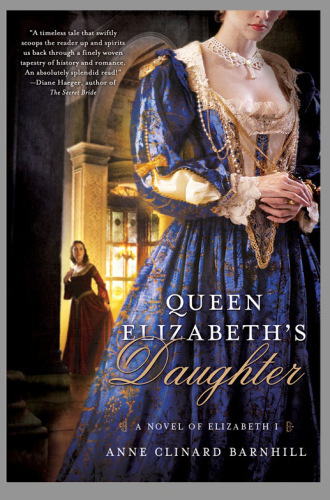 In preparation for this blog, I inquired of my husband what question he would ask his favorite author, Patrick O’Brian, if he had the chance. He thought about it for a minute and then said, “I’d ask him where he got the character of Dr. Maturin. Everyone loves that character. I want to know whether Maturin is based on someone O’Brian knew, or whether O’Brian just made him up.”
In preparation for this blog, I inquired of my husband what question he would ask his favorite author, Patrick O’Brian, if he had the chance. He thought about it for a minute and then said, “I’d ask him where he got the character of Dr. Maturin. Everyone loves that character. I want to know whether Maturin is based on someone O’Brian knew, or whether O’Brian just made him up.”
Readers do seem intrigued by the characters that emerge on our pages. They want to know on what real person the character is based. There is an underlying assumption writers automatically create word-people who mirror a flesh-and-blood people. And, sometimes, it’s true. Sometimes it’s true whether the writer means to do it or not. I’d written halfway into my first novel, AT THE MERCY OF THE QUEEN, before I realized my hero, Arthur Brandon, was really my husband in an idealized version.
And, I confess when I write what I call ‘revenge’ fiction, (that’s a story where I punish someone who has hurt or angered me) I create a thinly veiled caricature of the offending person. My revenge fiction is never successful but it sure is fun to write. But that’s what’s wrong with basing characters on real people. It never really works. Except when it does.
Sometimes writers can capture the essence of a real person and, sometimes, the story will work for them. But for me, the real juice comes when the character appears on the page by surprise and acts in ways that shock me. If a character startles me, I fall in love; I know that character will find a home somewhere in my writing. A poem, a short story, a novel—somewhere that lively person will appear and, hopefully, surprise and delight a reader, too.
But where did that character come from? I suspect characters come from bits and pieces of people we know or have read about. Perhaps in the deep, dark, recesses of our psyches these beings are cobbled together, a sort of Frankenstein of the soul. Perhaps the Muse really does whisper a character into our ears. That happened to me once—the whole story was told in the voice of one woman who did seem to speak to me. It was the easiest story I’ve ever written. Or perhaps Jung had it right and these ideas are floating around in the collective unconscious, just waiting for the right person to come along and jot it all down.
The truth is, I don’t know where my characters originate. Perhaps from a face I see in on a crowded beach. Maybe from a word or phrase I read in a poem. Ghosts, angels, demons, all possibilities. Or, as Scrooge says, maybe they come from ‘an undigested bit of beef.’
 Anne Clinard Barnhill has been writing professionally for almost twenty-five years, publishing articles and short stories in various magazines and anthologies. The author of three books and a poetry chapbook, Ms. Barnhill enjoys writing in a variety of genres. She also loves to tickle the ivories, play bridge and most especially, assume her role as the superhero Bottom Woman, a game she plays with her 5-year-old grandson.
Anne Clinard Barnhill has been writing professionally for almost twenty-five years, publishing articles and short stories in various magazines and anthologies. The author of three books and a poetry chapbook, Ms. Barnhill enjoys writing in a variety of genres. She also loves to tickle the ivories, play bridge and most especially, assume her role as the superhero Bottom Woman, a game she plays with her 5-year-old grandson.
Anne’s debut novel, AT THE MERCY OF THE QUEEN, was released in January, 2012. Her poetry chapbook, COAL, BABY, was also released in 2012 from Finishing Line Press. Anne’s new book, QUEEN ELIZABETH’S DAUGHTER, will be released from St. Martin’s Press in March, 2014.


September 25, 2013
Author Yona Zeldis McDonough Shares Her 9 Rules For Writing For Newbies & Pros
 I’m happy to introduce author Yona Zeldis McDonough! Yona is a new-to-me author (I love finding those!) who has published five novels for adults in addition to more than twenty children’s books. One of the best parts of meeting new authors in addition to reading their books and getting to know them, is the inspiration they impart without even trying! Yona has published so many books, she has a job as a fiction editor for a magazine, and I know from becoming friends with her that she also has a family and dogs.
I’m happy to introduce author Yona Zeldis McDonough! Yona is a new-to-me author (I love finding those!) who has published five novels for adults in addition to more than twenty children’s books. One of the best parts of meeting new authors in addition to reading their books and getting to know them, is the inspiration they impart without even trying! Yona has published so many books, she has a job as a fiction editor for a magazine, and I know from becoming friends with her that she also has a family and dogs.
Below, Yona shares her process (she starts with voice, do you?), her favorite scenes in here new novel, and her thoughts on the women’s fiction label.
Please welcome Yona Zeldis McDonough to Women’s Fiction Writers and share your thoughts below!
Amy xo
Author Yona Zeldis McDonough Shares Her 9 Rules For Writing For Newbies & Pros
 Amy: TWO OF A KIND is your fifth novel! Congratulations! Can you share a little about the story and what sparked the idea?
Amy: TWO OF A KIND is your fifth novel! Congratulations! Can you share a little about the story and what sparked the idea?
Yona: I have to start with a voice. If I don’t hear a voice in my head, urgently whispering to me, telling me that I must write this down now, I can’t get going. In the case of Two of a Kind, the first voice I heard was that of Dr. Andy Stern. He’s a widower and a high-powered ob/gyn, to say nothing of being a man. And yet he came to me, telling me his story. Once I started to hear his voice, the story widened. I heard the voices of his son, Oliver, who is still mourning the death of his mother, and Christina Connelly, the woman who seems all wrong for Andy—until he falls in love with her—as well as the voice of Christina’s daughter Jordan, who hates Andy on sight.
Amy: With multiple novels published, do you have a favorite part of the writing process, an internal (or external) place you go in order to move forward with your story?
Yona: I love it when the story and the characters take over, and you feel like you are watching them on stage rather than moving them around yourself. But I don’t have much control over when—and even if—I can achieve this state. So the only thing to do is to keep working. You need to build the house if you want the muse to visit. She needs a place to touch down.
Amy: What does your novel writing life look like? I know you’re also the fiction editor for Lilith Magazine. And you’ve also written non-fiction. We’re tend to all be so many things these days. How do you balance it all?
Yona: I find that working across genres is very liberating for me. For instance, if something is not going well in a novel I am working on, I can turn to an essay or a children’s book (I’ve written quite a number of those) and still feel I am being productive. Working in a different genre can generate the confidence I need to overcome whatever is not working elsewhere, and when I return to the place where I was stuck, I am often able to see solutions that were hidden before.
Amy: What is one of your favorite scenes in TWO OF A KIND (without any spoilers) and why?
Yona: There are a couple of scenes I could point to: one is Oliver’s, when he finds out that a girl he likes prefers someone else—his best friend. Even though I am long way off from that teen-aged angst, it still felt so real to me and I could still ache along with him. The other concerns Andy’s mother Ida, and her discovery of a silver candlestick in Christina’s kitchen. The candlestick has a particular significance to her and that significance is revealed in the scene. I have always believed in the talismanic power that objects exert over us and here was an example I could use to further the story and deepen its themes.
Amy: How would you define women’s fiction? Does the label bother you?
Yona: It does bother me only because it is used in a less than sort of way. When men write about domestic issues, they are hailed as brave, sensitive, soulful and profound. When women write about these same issues, we are told our books are chick lit. Why is this the case? It seems unfair and belittling to me.
Amy: What’s your best advice for aspiring authors (or published authors) of women’s fiction?
Yona: Here are my nine rules; I think they will be helpful to newbies and pros alike:
Write what you love. Not necessarily what you know; with the help of the NYPL and Google, you can always learn what you need to know. But I don’t think you can learn to love something that is innately alien or repellent to your nature.
Write consistently. Writing is a like a physical discipline—too much time away and you grow rusty and stiff. So keep yourself supple by writing on a regular basis, daily if you can, or as close to it as possible. Which leads me to the next rule…
Set manageable goals. I used to think that I had to have these long, unbroken stretches of time in which to work. Then I had a child, and realized that the next long, unbroken stretch of time might well come when he was a freshman in college. I despaired of finishing anything for the next two decades. But then I lowered my expectations—instead of focusing on finishing an entire story or book, I said to myself, I would write two pages a day, five days a week. Just two. Even someone as mathematically challenged as I am realized that my humble two pages would be ten at the end of the week, soon to be 20, 40 and eventually, a finished draft.
Banish the inner critic WHILE you are writing. Writing and editing are two mutually exclusive activities; you cannot edit while are writing. So when writing, focus on writing. Editing will come later. Your goal is to work through and COMPLETE a draft; editing while you are writing will inhibit you from doing that.
Learn to use the silence—By this I mean, when your draft is actually completed, put it in a drawer and don’t look at for a couple of weeks. The reason for this: every time you go over it, it seems as if the way it is written is the only way, that all your choices are inevitable, without the possibility of variation. By putting the ms. away, you return to it with a fresh perspective, and can see that wait, maybe this section is not so strong, or that story really starts on page 3, or that ending is not clear…This is the moment to resurrect the inner critic, and to look at your own work with something like objectivity.
Find a trustworthy reader (or readers) Share your work with like-minded souls who can give you real feedback and advice. Writing groups/classes are excellent for finding these chosen few.
Send your work out intelligently. Do the research—who publishes what you are doing, names of editors, do they accept unsolicited mss. Troll the websites for submission guidelines; also check out their lists on line, to see what kinds of books they are publishing.
Adopt the 48-hour rule. As soon as soon as I get something back, I send it right out again, preferably within 24 hours. Nothing takes the sting out rejection better than fresh hope; what might not be one editor’s bowl of borscht will be another’s most savory dish. So just keep getting your work out there.
Accept that writing is a life’s work, not a passing fancy. While fame and fortune are lovely goals, they rarely happen overnight, if at all. If your goal is to make a lot of money quickly, then by all means figure out something else to do, because writing is a highly unreliable way of going about it. Instead, accept and indeed embrace the privileges of the writing life, which are many and which I personally would not trade for almost anything.
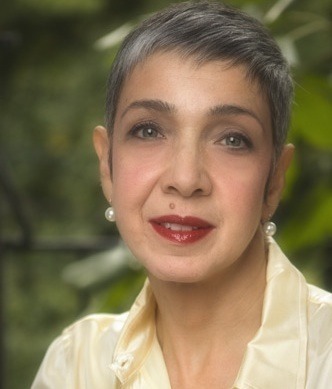 Yona Zeldis McDonough is the author of five novels for adults, THE FOUR TEMPERAMENTS, IN DAHLIA’S WAKE, BREAKING THE BANK (which has been optioned for a film) and A WEDDING IN GREAT NECK. Her fifth novel, TWO OF A KIND, was published in September 2013.
Yona Zeldis McDonough is the author of five novels for adults, THE FOUR TEMPERAMENTS, IN DAHLIA’S WAKE, BREAKING THE BANK (which has been optioned for a film) and A WEDDING IN GREAT NECK. Her fifth novel, TWO OF A KIND, was published in September 2013.
She is also an award-winning children’s book author with 22 children’s books to her credit. THE DOLL SHOP DOWNSTAIRS received a starred review from Jewish Book World saying that it “will become a classic.” In another starred review Kirkus called the sequel, THE CATS IN THE DOLL SHOP, “a quiet treasure.” THE DOLL WITH THE YELLOW STAR won the 2006 Once Upon a World Award presented by the Simon Wiesenthal Center. LITTLE AUTHOR IN THE BIG WOODS, a biography of Laura Ingalls Wilder, will be published by Holt.
For over a dozen years, Yona has been the Fiction Editor at Lilith Magazine. She works independently to help aspiring writers polish their manuscripts. To arrange a book club visit, inquire about editorial services or just to say hi, please contact Yona via her website: http://www.yonazeldismcdonough.com or on the Facebook fan pages for her novels, which she hopes you’ll “like.”


September 18, 2013
A Thought-Provoking Interview With Nina Schuyler, Author Of THE TRANSLATOR: Annoying Characters, The Hierarchy Of Fiction, And Rewards For Reaching Goals
 If you hadn’t guessed, I love interviewing authors. Here’s a great example of why!
If you hadn’t guessed, I love interviewing authors. Here’s a great example of why!
Today Nina Schuyler, author of THE TRANSLATOR, takes us into the world of fiction vs. women’s fiction, sympathetic vs. empathetic characters, and chocolate vs. cake. Nina really made me think about the book I’m writing because the main character makes some bad choices, but through it all she exhibits fierce love for her child and unwavering loyalty to her elderly next-door-neighbor. I’m working hard on making sure this character is able to be understood, even if she makes readers shake their heads. I want her to be empathetic, not pathetic.
Nina also mentions wishing for more female characters in fiction “who experience anger, raw ambition, intellect, sexual hunger, arrogance, a solid ego, authority, power.”
To me, that sounds like many of the women I know in real life—so I think Nina is onto something.
Please welcome Nina Schuyler to Women’s Fiction Writers.
Amy xo
A Thought-Provoking Interview With Nina Schuyler, Author Of THE TRANSLATOR: Annoying Characters, The Hierarchy Of Fiction, And Rewards For Reaching Goals
 Amy:
I’ve found that people often ask authors how a book was inspired. I prefer to ask (and to know) what one thing, or person, or experience, sparked the idea? And where were you when this happened?
Amy:
I’ve found that people often ask authors how a book was inspired. I prefer to ask (and to know) what one thing, or person, or experience, sparked the idea? And where were you when this happened?
Nina: Thank you so much for interviewing me! I was flipping through an issue of The New Yorker, when I found an article by David Remnick, “The Translation Wars.” Richard Pevear, an English speaker, and his wife, Larissa Volokhonsky, a Russian émigré, were re-translating all the great Russian novels into English. Finally, what Nabokov called a “complete disaster” and “the dry shit” of Constance Garnett who had first translated Russian literature into English could be set aside.
As a girl, I fell in love with Dostoyevsky, Tolstoy, Chekhov, Pasternak. I remember one summer when I was twelve, I carried Boris Pasternak’s Doctor Zhivago every day to the pool. Back then, I didn’t even consider that the stories were first written in Russian—what Thomas Mann calls, “the muddy, barbaric, boneless tongue from the East.” What I thought about was snow, sleigh rides, passion, betrayal, revolution, peasants, czars, love.
I hurried to my book shelf. All my Russian novels—all translated by Garnett! I felt betrayed. I’d read a watered-down, corrupted Russian translation, soaked in a heavy dose of English custom and sensibility.
It was November 2005. Rain, I remember rain that night. I stayed up late, writing, thinking about what constitutes a good translation? To whom or what should a translator be loyal? How does one translate fiction, with all its nuances and subtext? What if a translator thinks she does a good job, but, in fact, makes egregious errors? I was transfixed by the complexities that exhausted easy explanations. I was caught up and imagined willingly being caught up for years. The more I explored, the larger the pile of questions. I had, to my delight, the beginning of a novel.
Amy: In your Rumpus interview you discuss the buzz about women writing unlikable characters. For me, it’s more about understanding or wanting to understand a character than liking her. (But I do like to like characters.) Do you think there’s a difference in the perception of how characters *should* be based on the type of book a reader thinks he or she has picked up? I have found that even with my own reading, expectations play a part in how I feel about the book. (Therefore, I try to have no expectations and often read books I know nothing about.)
Nina: I agree the issue is not sympathy, but empathy for the protagonist. The first chapter of a novel should do a lot of work to align readers’ expectations for the type of book that will unfold. Promises are made in that first chapter: here is the main character(s), the conflict, or at least hints of the conflict, themes, subject matter, tone and style, point of view, setting, and, importantly, pathways for a reader to emotional engage with the character. So, for instance, in The Woman Upstairs, by Claire Messud, a reader meets Nora on the first page who says, “How angry am I? You don’t want to know. Nobody wants to know about that.” Messud prepares us for an honest, sometimes uncomfortable-making narrator. In the first chapter of my new novel, The Translator, the reader sees Hanne’s monomaniacal focus on her work and also hears Hanne say in a matter-of-fact tone that she hasn’t heard from her daughter in six years. A not-so-subtle hint that Hanne has fundamental flaws and huge blind spots.
Sometimes these promises are made explicit on the cover. Other times on the back of the book. I’m thinking of Olive Kitteridge, by Elizabeth Strout: “At times stern, at other times patient, at times perceptive, at other times in sad denial, Olive Kitteridge, a retired schoolteacher…” The reader knows Olive isn’t going to be a passive pushover.
As an aside, I’d love to read more novels with female characters that shake up and out of the stereotype. More females who experience anger, raw ambition, intellect, sexual hunger, arrogance, a solid ego, authority, power.
Amy: Would you share with us how you started writing and the steps you took to get your first and second novel published?
Nina: I first faced the blank page (the blank screen) as a reporter for a legal newspaper. I covered criminal courts, employment law, women and the law, and anything else that came up. I put my start line there, because as I gathered stories for the paper, so much was left on the cutting floor, so to speak. A newspaper article uses a specific form that delivers information efficiently and concisely to the reader. Yet I met so many fascinating characters, characters in the true sense of the word. So at night I began taking fiction classes. At some point, I got the courage to apply to San Francisco State University’s graduate creative writing program. When I was accepted, I got enough validation to keep writing.
Nina: My first novel, The Painting, was my thesis (revised many times). That novel had a speedy entrance into the world—in a matter of weeks, I got an agent, and she sold it quickly. Nine years later, (there’s an unsold novel, another baby, an editor who retires, an agent who leaves her agency, my mother passing, teaching on Tuesday and Wednesday nights) my second novel, The Translator, was ready to move out of the house. But who would help? Who would believe? Love it? Twenty query letters later, I found a new agent, who was enthusiastic and smart and savvy and lovely. Thankfully, she sold it.
Amy: Can you tell us what you have in the works now?
Nina: A new novel is taking shape. The Painting was sparked by an image—Japanese artwork floating in the air, finding its way to Paris. The Translator was inspired by ideas. This new one is loosely (very loosely) based on someone I know. A reminder, I suppose, that a novel can come from many different sources.
Amy: We talk a lot about women’s fiction here (obviously). The label doesn’t bother me because I realize that the bulk of my readership is female, and that works for me. Women’s fiction evokes the notion of a story that’s how a woman gets through something and to the other side, whatever that something may be and wherever that other side may be. Does the term women’s fiction bother you? And either way, how would you define it?
Nina: My first response: so if I write a novel about a man who gets through something and to the other side, have I created “men’s fiction”? In fact, my work-in-progress novel has two male point-of-view characters and one female. What should that be called?
On a more serious note, the term creates a hierarchy. There is fiction and then there is so-called ‘women’s fiction.’ When you add that seemingly benign adjective, you suggest there is a norm or standard, which is fiction. Everything that isn’t fiction, or the standard, is a subset. The not-so-subtle undertone is that “women’s fiction” is not as good, serious or important as “fiction.”
Now is probably a good time to mention the VIDA report (www.vidaweb.org), which tracks books written by men that get reviewed versus books by women. Prepare yourself. In 2012, Harper’s reviewed 54 books written by men and only 11 written by women. At the London Review of Books, 203 written by men, only 74 by women. New Republic, 80 to 16. The Nation, 92 to 27.
I don’t have hard numbers, but my guess is that women predominately write “women’s fiction.” If “women’s fiction” is subpar to “fiction,” then these books won’t be reviewed as often as books written by men.
The arc you describe—how a woman gets through something and to the other side—is true of all fiction, regardless of gender. A reader spends anywhere from eight to ten hours, reading a novel. If there is no crescendo, no epiphany, no change, the reader’s expectations will have not been met, and you’ll have a pretty angry reader.
So how would I define fiction written by women? Fiction. (Love it, Nina. Big time LOVE.)
Amy: What’s the best advice for aspiring authors (or someone like me, working on #2) of women’s fiction. I think there’s a fine line between an unlikeable character and annoying character. Do you have any specific advice for writing a character that just might get under the reader’s skin?
Nina: Many writers like to romanticize writing, but in truth, it’s hard work. It requires the seemingly out-of-vogue word, discipline. You must be your own taskmaster. I teach creative writing at a university and tell my students to set up a writing schedule. Each week, set a goal. For instance, ‘I will write Monday, Wednesday and Friday, two hours each day.’ If you meet your goal, reward yourself. Chocolate is good. So is cake.
To me, an annoying character is one for whom the reader has no understanding or empathy. It means you, as writer, have yet to capture the complexities of human psychology. My husband’s Aunt Liddie, who died at the age of 90, was an iron horse of a woman. Things had to be done a certain way and done on her time schedule. She was strict, unforgiving of mistakes, quick to judge. “No! It must be done this way,” she’d say, her favorite refrain. Do you find her annoying?
Let me go on: As a young woman in Germany, she fell in love with an American soldier. She married him, went to America, and not long after, they divorced. Alone, without an income, she worked as a nanny and studied to become a nurse. When she married again, she continued working, not willing to be dependent on another man. When her younger sister was in the hospital for two months, Aunt Liddie, at age eighty-six, went every day to care for her. Do you still find her annoying?
I’m telling you this story so you experience one way to create empathy for a character (or a human being, for that matter). That is, provide a history that makes a reader revise her understanding of a character. I did exactly this for my character, Hanne. I also stole a technique from Marilyn Robinson in her novel, Gilead. There, the first person narrator is a pastor who doesn’t like one of the characters in the book. Each time he treats this other character poorly, though, he regrets it and promises to do better. In The Translator, as Hanne is remembering how she treated her daughter, she experiences regret, remorse, and often imagines another way she could have handled the situation.
Finally, when a character shows love—love of anything, a dog, a child, a beloved coin collection—the reader is more likely to emotionally engage with the character. Yes, she may be unlikeable, but she is also vulnerable and human and has a heart.
Thank you so much!
 Nina Schuyler’s first novel, The Painting, was nominated for the Northern California Book Award, and named a “Best Book of the Year” by the San Francisco Chronicle. She was nominated for a 2010 Pushcart Prize and teaches creative writing at the University of San Francisco.
Nina Schuyler’s first novel, The Painting, was nominated for the Northern California Book Award, and named a “Best Book of the Year” by the San Francisco Chronicle. She was nominated for a 2010 Pushcart Prize and teaches creative writing at the University of San Francisco.
Visit the author at http://www.ninaschuyler.com.


September 12, 2013
Guest Post: Author Katharine Britton Shares How Writing A Novel Is Like Growing A Garden
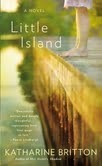 I don’t have a green thumb. I wish I did. I always say I’m a May-June gardener, and I mean—in the same year. I start planting things in May and by June I’ve forgotten to water and tend them.
I don’t have a green thumb. I wish I did. I always say I’m a May-June gardener, and I mean—in the same year. I start planting things in May and by June I’ve forgotten to water and tend them.
Good thing I’m more responsible with my writing (and my—whew—well-tended and pretty-much-grown children).
Today, author Katharine Britton shares her thoughts on writing, and gardening, and gardening and writing. Katharine eloquently takes the seeds of her idea and many great points grow—about planting and waiting and tending and sometimes, forgetting. And then, going back.
Please welcome Katharine Britton to Women’s Fiction Writers!
Amy xo
Let Writing, Like Gardening, Be Its Own Reward
by Katharine Britton
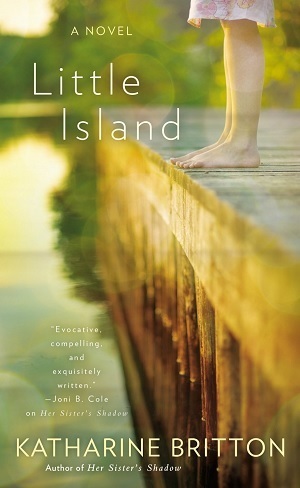 Each spring in Vermont I eagerly fill pots and window boxes with Moo Doo and pile in as much color as possible. I am hungry for results. Geraniums, angelonia, lavender, and cherry tomatoes settle into pots on the patio. Lettuce seeds land in two, three-by-three foot raised beds (one can never have enough fresh lettuce), basil gets its own box (I love pesto) and beans get theirs. I weed, edge, water, fertilize, and wait, impatiently, checking daily for signs of life in the vegetable boxes, for blossoms on my annuals, and for my perennials to emerge along the fence.
Each spring in Vermont I eagerly fill pots and window boxes with Moo Doo and pile in as much color as possible. I am hungry for results. Geraniums, angelonia, lavender, and cherry tomatoes settle into pots on the patio. Lettuce seeds land in two, three-by-three foot raised beds (one can never have enough fresh lettuce), basil gets its own box (I love pesto) and beans get theirs. I weed, edge, water, fertilize, and wait, impatiently, checking daily for signs of life in the vegetable boxes, for blossoms on my annuals, and for my perennials to emerge along the fence.
After two weeks, the potted plants continue to be dwarfed by their over-sized containers and show little color, and the raised beds stubbornly remain thirty-six square feet of uninterrupted dirt. The perennials have emerged but appear wholly unequal to the task of filling the vast, empty spaces around them. In response, I scurry from nursery to nursery, buying plants—preferably in bloom—to plug those holes. When a scraggly line of pale green stubble finally appears in the lettuce box, and yet the beans remain invisible, I replant. I can be an impatient gardener.
At some point, each spring, I get distracted for a few days, and when I go back out to my garden, those holes in the perennial bed turn out to have been the spaces the plants needed when they grew to full size. Because I rushed out and bought new plants to fill those holes, lilies now overshadow iris, the Echinacea fight for space and light, the phlox has marched right over the sedum, and the bee balm insinuated itself everywhere. Out in the vegetable patch, the basil has started to go to seed, hundreds of beans dangle from dozens of vines, and the deer have eaten half the lettuce.
Okay, so maybe my absence was more than a few days, but I’m trying to make a point. Gardening has much in common with writing novels. In the beginning, it’s easy to lose hope as ideas fail to germinate, plots seem thin, and characters refuse to bloom. These things take time. If you leave a garden or an early draft for too long, be afraid. The key is what you do when you return.
When life first calls me away from a draft manuscript, I experience acute separation anxiety. I long for the relationships that I’ve come to rely on and for the characters that have kept me company for months. I stumble around as though half-awake, just risen from a deep, dream-filled sleep, groggy and unable to distinguish reality from fiction. Plots unfold as I go, so writing a novel can engender as much eager anticipation as reading one. What will he say the next time they meet? When will she discover the woman’s true identity? How will that be revealed? So many questions remain unanswered that I feel cheated by my absence and worried for my characters.
Soon, however, my anxiety over my missing companions and their many questions fades to nostalgia. In two weeks, I have trouble recalling their names. After a month I’m afraid to go back¾much as I am to visit my garden after such a hiatus. What was once an orderly assemblage, a tidy creation with seeds thoughtfully planted at recommended depths, plants (and scenes) right-sized and well spaced has become an unmanageable mess.
My initial reaction when faced with a garden, or manuscript, after a lengthy absence is panic. “This is terrible!” I shriek. “What a mess.” Lilies bristle with unadorned stems, foliage sags, spent blossoms litter the ground; characters seem unmotivated, the plot random, the dialogue stilted. “Off with their heads!” I edit ruthlessly, despite the fact that doing so will leave gaping holes in both creations.
These moments in gardening and writing, I’ve learned, are best approached with restraint, equanimity, and decorum. On certain days my garden looks great. On others it looks dreadful. Ditto with draft manuscripts. If I am forced to leave either for a length of time¾and this will happen¾I’ve found it is best to re-enter slowly, cautiously, and without judging myself or what lies within.
Writing is a process. So is gardening. I have learned that impulsivity rarely pays off: piling in too much, too early, isn’t good, and neither is reactively whacking out huge sections later. I’ve learned to be patient, to step back often and take a good look at what I’m adding and where I’m adding it. Pull the weeds, edge, take some notes, contemplate, watch, and wait. It helps, I’ve found, to focus more on the process than the outcome: to allow the gardening—and the writing—to become their own rewards.
 Katharine Britton’s first novel HER SISTER’S SHADOW was published in 2011 by Berkley Books (Penguin, USA). Her second novel LITTLE ISLAND came out in September 2013. She has a Master’s degree in Creative Writing from Dartmouth College, and a Master’s in Education from the University of Vermont. Her screenplay, “Goodbye Don’t Mean Gone,” was a Moondance Film Festival winner and a finalist in the New England Women in Film and Television contest. Katharine is a member of the League of Vermont Writers, NEIBA, and The New Hampshire Writer’s Project. She has taught at ILEAD, Colby-Sawyer College, and The Writer’s Center in White River Junction.
Katharine Britton’s first novel HER SISTER’S SHADOW was published in 2011 by Berkley Books (Penguin, USA). Her second novel LITTLE ISLAND came out in September 2013. She has a Master’s degree in Creative Writing from Dartmouth College, and a Master’s in Education from the University of Vermont. Her screenplay, “Goodbye Don’t Mean Gone,” was a Moondance Film Festival winner and a finalist in the New England Women in Film and Television contest. Katharine is a member of the League of Vermont Writers, NEIBA, and The New Hampshire Writer’s Project. She has taught at ILEAD, Colby-Sawyer College, and The Writer’s Center in White River Junction.
When not at her desk, Katharine can often be found in her Norwich garden, waging a non-toxic war against the slugs, snails, deer, woodchucks, chipmunks, moles, voles, and beetles with whom she shares her yard. Katharine’s defense consists mainly of hand-wringing, after the fact.


September 9, 2013
Debut Women’s Fiction Author Lorrie Thomson Writes A Story About Finding Balance And Moving Forward (Which Is Also Great Advice For Writers)
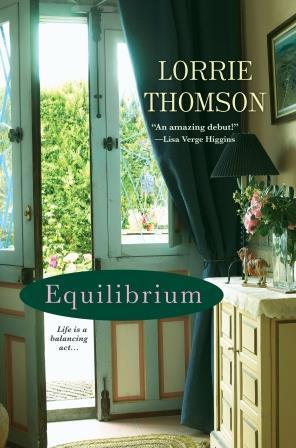 I always say that the internet is about making connections and building relationships and no one can convince me otherwise. Back in May, from thousands of miles away, Author Lorrie Thomson sent me my first photo of The Glass Wives out in the wild! Returning the favor is sweet, indeed. Alas, I don’t have a bookstore nearby, but I do have this blog! So what’s the next best thing to being there with Lorrie in that store with both of our books? Talking about to Lorrie about EQUILIBRIUM here on Women’s Fiction Writers.
I always say that the internet is about making connections and building relationships and no one can convince me otherwise. Back in May, from thousands of miles away, Author Lorrie Thomson sent me my first photo of The Glass Wives out in the wild! Returning the favor is sweet, indeed. Alas, I don’t have a bookstore nearby, but I do have this blog! So what’s the next best thing to being there with Lorrie in that store with both of our books? Talking about to Lorrie about EQUILIBRIUM here on Women’s Fiction Writers.
Please welcome Lorrie Thomson to Women’s Fiction Writers!
Amy xo
Debut Women’s Fiction Author Lorrie Thomson Writes A Story About Finding Balance And Moving Forward (Which Is Also Great Advice For Writers)
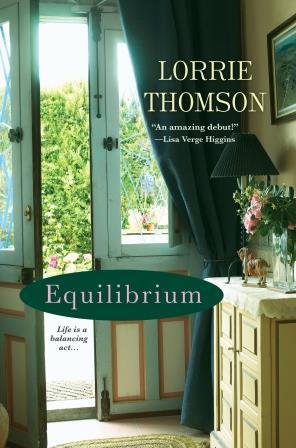 Amy: Congratulations on your debut novel EQUILIBRIUM! What sparked the idea for the novel? How or why did you decide to add the element of bipolar disorder to a story already strewn with the different subject of grief? (Kudos to you!)
Amy: Congratulations on your debut novel EQUILIBRIUM! What sparked the idea for the novel? How or why did you decide to add the element of bipolar disorder to a story already strewn with the different subject of grief? (Kudos to you!)
Lorrie: Thank you, Amy, for having me on Women’s Fiction Writers. I’ve been reading your blog for a long time, and I’m a big fan!
Now, to your question.
As with most works of fiction, Equilibrium started with two questions: What if? and Why?
What if the mother of two teenagers was raising her family by herself a year after her husband’s suicide? Why did the husband commit suicide? The husband committed suicide after years of struggling with bipolar disorder.
For some unknown reason, bipolar disorder was on my radar. I kept hearing about it on television, reading about it in print media, and it seemed like a great place to start a story. Through research, I became more and more fascinated with the topic of mood disorders. We all experience fluctuations in mood. How do we know when we’ve crossed the line into a dangerous illness? Since bipolar disorder is hereditary, the question is a natural source of concern for the family in Equilibrium.
Amy: As a debut author, what has been the most unexpected part of your journey to publication?
Lorrie: I’m not sure whether this was entirely unexpected. But after you sign with an agent, be prepared for at least one round of revisions. When you sell, get ready for another. A great editor helps you make the story better and, hopefully, imparts you with knowledge that carries into your next project.
Amy: Would you share with us how you found your agent and what it was like to go from query to agent to editor/publisher?
Lorrie: I found my agent through a cold query. It really happens! I heard from a writer on a writers’ loop that a new agent was joining BookEnds, and open to women’s fiction queries. The query for Equilibrium quickly went from a request for a partial to a request for the full manuscript, and then The Agent Call. Lightning-quick, after seven years of querying three different manuscripts! I can still remember seeing Jessica Alvarez on caller ID, and thinking, this is it. Somehow, I managed to walk up two flights of stairs, phone to my ear, and flip through the notes I’d prepared for The Agent Call. Before Equilibrium went on submission, we went through a round of revisions. (There are always revisions!) And then The Wait, reminiscent of the days on submission with agents, and just as emotional. The day I accepted an offer from Kensington Books was just as exciting as I’d imagined. Toasts and jumping up and down. It continues to feel surreal.
Amy: You have two more books coming out with Kensington in the next two years! That’s fabulous! Can you share with us a little about the new books?
Lorrie: The 2014 book, What’s Left Behind, is about Abby Stone, a single mom who’s still grieving the tragic death of her college-aged son when his pregnant girlfriend lands on her doorstep, ready to offer her a second chance at motherhood.
I can’t yet offer a blurb for the 2015 book, but I will tell you the story features Celeste Barnes, Abby’s best friend from What’s Left Behind. The 2014 and 2015 books are stand-alones with connected characters.
Amy: How do you define women’s fiction? Does the label bother you?
Lorrie: I define women’s fiction as any story that focuses on a women’s journey from fracture to wholeness. That story may, or may not, contain romantic elements. Either way, the woman always saves herself.
The label doesn’t bother me within the publishing industry. Writers, agents, and publisher “get” the shorthand. Many readers “get” it too. But in certain company I call my novels book club fiction, a term that doesn’t leave out half the population.
Amy: What is your best advice for writers of women’s fiction?
Lorrie: Find a group of likeminded writers for critique and encouragement. Learn as much as you can about the craft of storytelling through books and workshops, both on-line and in-person. Read, read, read. Learn about the business end of writing, how to craft a synopsis and that all-important query letter. Then the challenging yet simple key: Never give up.
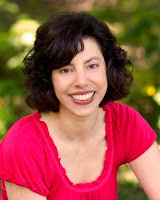 Lorrie Thomson lives in New Hampshire with her husband and children. When she’s not reading, writing, or hunting for collectibles, they let her tag along for Casco Bay camping, paddles along the Saco, and “strolls” up 4,000-footers in the picturesque White Mountains.
Lorrie Thomson lives in New Hampshire with her husband and children. When she’s not reading, writing, or hunting for collectibles, they let her tag along for Casco Bay camping, paddles along the Saco, and “strolls” up 4,000-footers in the picturesque White Mountains.
To learn more about Lorrie and arrange for a book club chat, visit her website at http://www.lorrie-thomson.com. You can also find Lorrie @LorrieThomson on Twitter.
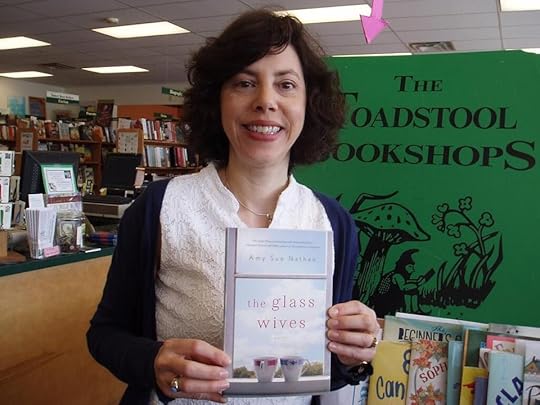
Here’s Lorrie in New Hampshire accessorizing her outfit with a copy of THE GLASS WIVES (Thanks again for that, Lorrie! I remember how getting that photo made my day! xo)


September 6, 2013
Author Sally Koslow Says Men Appreciate Her Novels, But She Doesn’t Spit On The Concept Of Women’s Fiction
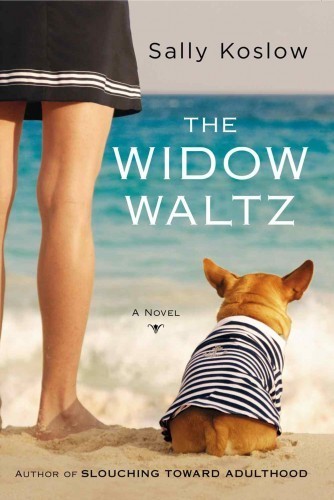 I connected with author Sally Koslow when I interviewed her about her third novel, With Friends Like These in 2011. Now, with the publication of Sally’s fourth novel, THE WIDOW WALTZ, Sally joins us again at Women’s Fiction Writers with her insights about writing fiction and non-fiction, exploring the threads of reinvention and widowhood and secrets, and digging into writing that is meaningful to us to make our own writing more meaningful.
I connected with author Sally Koslow when I interviewed her about her third novel, With Friends Like These in 2011. Now, with the publication of Sally’s fourth novel, THE WIDOW WALTZ, Sally joins us again at Women’s Fiction Writers with her insights about writing fiction and non-fiction, exploring the threads of reinvention and widowhood and secrets, and digging into writing that is meaningful to us to make our own writing more meaningful.
Both THE WIDOW WALTZ and THE GLASS WIVES were listed in Lilith Magazine’s Summer Suggestions! I was thrilled to be paired with Sally, who is a generous and compassionate writer friend and mentor.
Please welcome Sally Koslow back to Women’s Fiction Writers!
Amy xo
Author Sally Koslow Says Men Appreciate Her Novels, But She Doesn’t Spit On The Concept Of Women’s Fiction
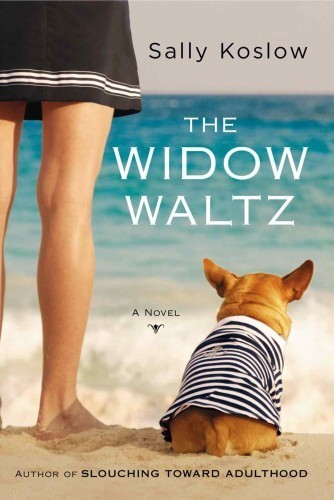 Amy: The Widow Waltz is your fourth novel, congratulations! Where were you and what were you doing when the idea sparked for this novel? Did the idea come to you fully formed, or was it a plot point, a character, a line of dialogue?
Amy: The Widow Waltz is your fourth novel, congratulations! Where were you and what were you doing when the idea sparked for this novel? Did the idea come to you fully formed, or was it a plot point, a character, a line of dialogue?
Sally: The Widow Waltz wove a handful of threads. After writing three novels whose protagonists were younger than I am, I wanted to create a character closer to my own age. When I considered the issues that women face at, say, 50, both widowhood and the struggle to re-invent yourself after years out of the workplace came to mind. I also started wondering about women who were beached by the Madoff swindle. For The Widow Waltz, I merged all of this in Georgia Waltz, and added a character with Alzheimer’s, the disease my mother had, as well as two daughter who were inspired by people I met in my research for Slouching Toward Adulthood, a non-fiction book I wrote about young people who take circuitous routes before landing.
Amy: I love your NY Times Opinionator essay on writing both fiction and non-fiction and not being able to pick a favorite. I’ve had essays published since I started writing again in 2006, and feel the same way. So I have to ask, what’s next for you? Novel or non-fiction? And how did you decide—or did the project decide for you?
Sally: Next up, fiction, though I have a few memoir-y essays to finish while I hatch the book. Since 2007 I’ve published four novels and only one non-fiction book, but fiction still feels newer, because I spent decades producing magazine articles as a writer or editor. Through fiction I like exercising my imagination and leveraging what I’ve lived, which was rarely the case as a staff writer or freelance reporter. At one point, for example, my specialty was freaky sexual relationships….loveless marriage, unconsummated marriage, incest. My first novel was about the magazine world, inspired by some of my you-can’t-make-this-stuff-up experiences as an editor-in-chief. The concept for The Late, Lamented Molly Marx came to me whole while I was sitting a neighbor’s funeral. With Friends like These grew out of a nasty injustice in a friendship.
Amy: Since I’m trying to juggle a myriad of projects, tell us how you do it! Do you write fiction on certain days and non-fiction on other days? Everything at once? (Can you tell I’m looking for the secret to your success?)
Sally: When I’m into something, I can’t shut down write-mode and I find myself “writing” when I’m walking around the city, running, cooking, sleeping. The first draft is torture. The fun is in polishing –upgrading words, cutting flab, eliminating unintentional duplication, untangling tenses. As I reread, which I do constantly, I always ask, “How can I make this better?” When I am juggling more than one deadline, I start the day with the project I absolutely have to focus on, even if there’s something else I’d rather write. Being trained as a magazine editor has helped me meet deadlines. This doesn’t mean that I don’t procrastinate. Whether you give me a lot of time or a little, I’ll probably do the same job, sometimes under the whip of pressure.
Amy: Novels are layered and complex. We know that as both readers and writers. But if you could impart one takeaway from The Widow Waltz, for its readers, what would it be?
Sally: Only one? That all of us are capable of handling more than we think. We can rise to the occasion and help can come in surprising packages. Also, that our families are a medley of people we love who love us back—they may be blood-links, but not always.
Amy: What do you think of the term “women’s fiction?” How would you define it? (Obviously it doesn’t bother me, but I know it gets under the skin of many authors)
Sally: Men have read and appreciated my novels; I see the reviews and Facebook comments. But I know most of my readers are women and as someone who happily edited magazines for female audiences, I’d be a hypocrite to spit on the concept of “women’s fiction.” I recognize that the subjects I have explored in my novels—working for the eccentric female celebrity editor of a magazine: reflecting on motherhood, infidelity, and complicated friendship; rebuilding your life after being widowed without resources—may resonate more for women than men. Fine. Certainly some amount of “women’s fiction” is sappy, overly dependent on clichés and product placement just as many suspense novels and thrillers marketed to men are poorly written. I like remind myself of authors like Margaret Drabble, Claire Messud or Elizabeth Strout, who often tell women’s stories. The real issue is that reviewers undervalue women’s concerns and give less coverage to “women’s fiction.”
Amy: What’s your best advice for aspiring authors (or any authors) of women’s fiction?
Sally: Read—extensively, slowly and not only for plot. Don’t waste your time on mediocre or derivative titles. Consider how the author of a finely executed novel or memoir has told her story and look carefully at her use of language. If an author’s work strikes a special chord for you, dig into other books that she’s written. If you’re lucky, the virus of good writing will infect you.
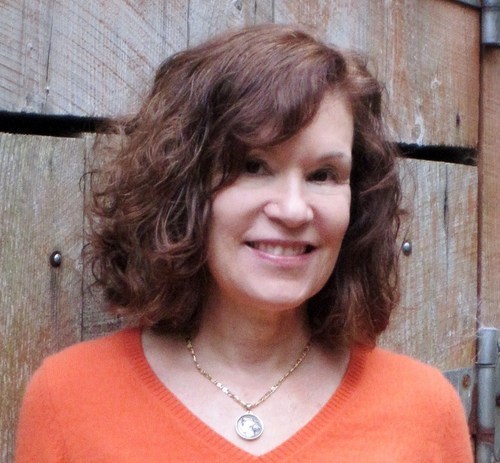 Sally Koslow is the author of The Widow Waltz, Slouching Toward Adulthood: Observations from the Not-So-Empty Nest, With Friends Like These, The Late, Lamented Molly Marx and Little Pink Slips.
Sally Koslow is the author of The Widow Waltz, Slouching Toward Adulthood: Observations from the Not-So-Empty Nest, With Friends Like These, The Late, Lamented Molly Marx and Little Pink Slips.
Please visit her website http://www.sallykoslow.com or follow her on Twitter: @sallykoslow


Women's Fiction Writers
- Amy Sue Nathan's profile
- 543 followers


